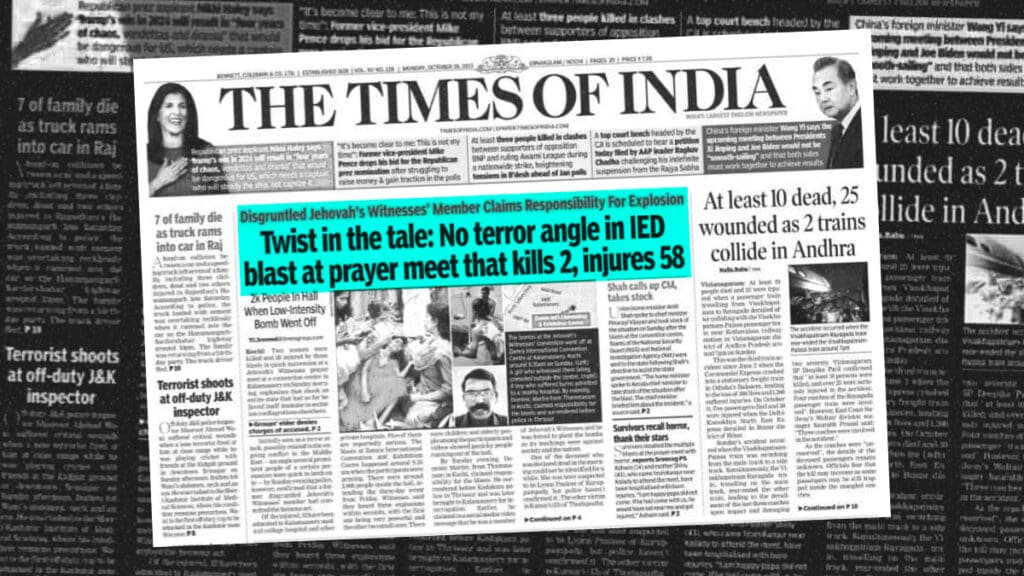
Why is the term “terrorism” so prominent today when talking about certain kinds of contemporary violence—not only in the United States but also in Europe, Israel, and other parts of the world? One suggestion has been that the previous violent groups in Europe were all operating within the framework of the nation-state and were therefore insiders; the present adversaries (‘Muslim terrorists’) are outsiders—even when they are citizens of the liberal democratic state or inhabitants of its governed territories.
On the other hand, however reprehensible it was to liberals, the violence of Marxists and nationalists was understandable in terms of progressive, secular history. The violence of Islamic groups, on the other hand, is incomprehensible to many precisely because it is not embedded in a historical narrative—history in the “proper” sense. As the violence of what is often referred to as a totalitarian religious tradition hostile to democratic politics, it is seen to be irrational as well as being an international threat. (On suicide bombing, Talal asad)
In the wake of the recent explosion at a Jehovah’s Witness prayer meeting in Kalamasseri in Kerala’s Ernakulam district, the reporting by Times of India’s journalist TC Sreemol carries a headline suggesting a “Twist in the tale: no terror angle in IED blast at prayer meet that kills 2, injured 58.” This incident raises fundamental questions about how we define a “terror attack” and who holds the authority to make such definitions. Notably, when the identity of the perpetrator shifted to Dominic Martin, it marked a significant shift in the discourse surrounding terrorism.
This situation underscores the politics of naming, as prominent academic Mahmood Mamdani astutely pointed out, drawing parallels to how the George W. Bush administration, during the invasion of Iraq, operated outside the confines of international law in the name of humanitarian intervention. This observation highlights the issue of authority in defining terms, where the “War on Terror” discourse transformed American violence into actions labeled as humanitarian intervention.
In the context of the explosion at the Jehovah’s Witness prayer meeting, some segments of the media syndicate began constructing Islamophobic narratives. Notably, figures like senior Kerala TV journalist MV Nikesh Kumar and former Lok Sabha member Dr. Sebastian Paul insinuated that the incident was an attack on Jews, assuming that Kochi held significance for Jewish communities and incorrectly characterizing them as extremists with little theological knowledge, conflating them with Jehovah’s Witnesses.
And we can see there the Central investigation agencies apprehended a youth in Kannur, who was subsequently released, based on suspicions arising from his clothing – a jubba, hat, and beard. News 18 Malayalam aired his video for 15 minutes. Meanwhile, Mathrubhumi and Asianet publications speculated on the perpetrators of the attack. Mathrubhumi suggested a pro-Palestinian connection, while Asianet claimed that central agencies were investigating individuals with ties to Hamas.
In another context, Sangh Parivar supporters on social media ran a hate campaign, alleging that Kerala is being influenced by terrorists. Various social media accounts asserted that a recent solidarity event attended by Hamas leader Khaled Meshaal was somehow linked to the incident. The mentioned incidents occurred within a span of five hours, revealing instances of Islamophobia and racism in Kerala. The aforementioned incidents occurred within a span of five hours, revealing instances of Islamophobia and racism in kerala.
After these incidents, the so-called ‘twist’ of TC Sreemol occurred, and the sense of ‘terror’ vanished. The name change in this context is called Islamophobia.
Hamid TP is the editor of Campus Alive web magazine.



